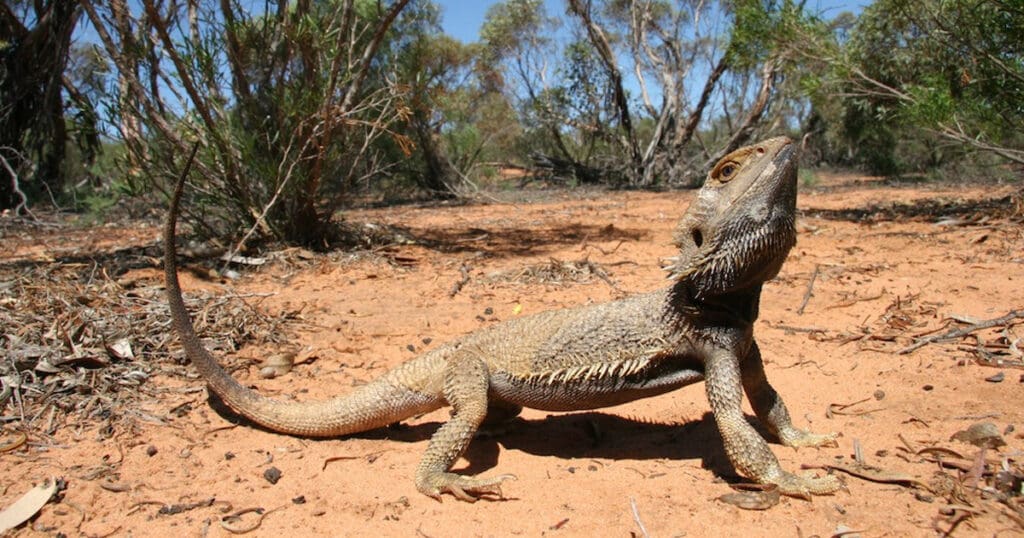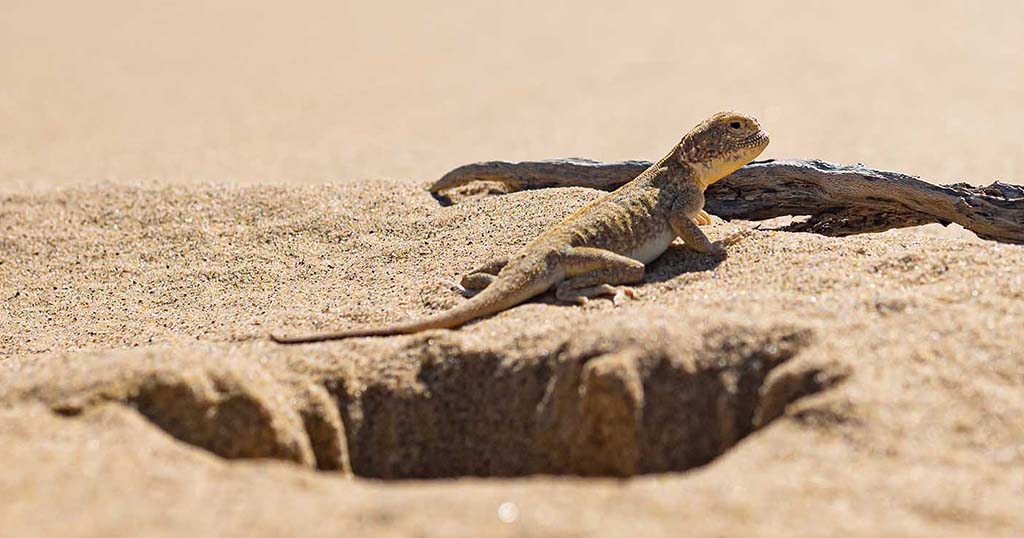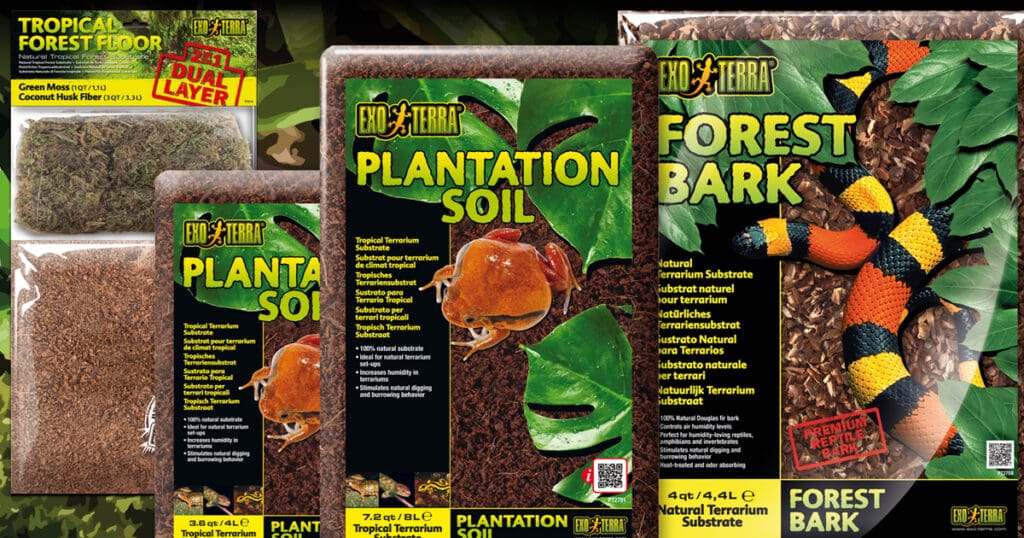
Stone Desert
Thomas Merckx
The Exo Terra Stone Desert mimics the natural soil found in arid regions, like deserts or savannahs. Most desert soils are not purely sand-based but rather a combination of sand, decomposed granite and clay resulting in interesting and sometimes colorful rock formations. Exo Terra’s Stone Desert allows you to create your own desert or savannah landscape, including cool-humid burrows as well as warmer elevated basking areas.
Lightly moisten the Stone Desert substrate with lukewarm water to shape naturalistic hills, burrows and basking platforms for your animals. Add water according to the preferred outcome: the more water you add, the more compact the resulting substrate will become! Once dry, the Stone Desert will retain its shape, while still allowing your reptiles to further execute their natural digging and burrowing behavior.
How to use the Exo Terra Stone Desert
Step 1: Terrarium
Any Exo Terra glass Terrarium is suitable. For desert species we recommend using a low or wide size, to achieve a suitable basking distance. Remove the Screen Cover and position the terrarium flat on its back.
Step 2: Preparing, applying and shaping the substrate
Start by building a sturdy base structure, consisting of outcrops, holes and basking platforms. Create a rough base design with styrofoam to add volume and simultaneously reduce the weight of your build. Mix 2 parts of Stone Desert with 1 part of water. Apply the Stone Desert and shape the main structural elements (inflated balloons can help to shape hides and burrows).
The cool-humid burrows allow your reptiles to absorb the much needed moisture via their skin while sleeping or hiding, while the warmer elevated basking areas help your reptiles to thermoregulate by offering various important temperature gradients.
Step 3: Incorporate additional decoration elements
Stone Desert can also be used to secure heavy decor items, like branches or rocks. Incorporate some of Exo Terra’s Desert Plants to enhance the natural look of your terrarium.
Step 4: Finish with loose substrate
Sprinkle loose Stone Desert on top of the drying substrate to add extra relief to the smooth base structure.
Step 5: Let the substrate dry
Drying could take up to 1-3 days, depending on the thickness of the layers. Once dry, the Stone Desert will retain its shape and any incorporated decoration will stay secured and fixed. You can now position the terrarium back on its base.
Step 6: Add bioactive substrate and live plants
Plantation soil can be used as a live plant medium, inside burrows and under hides (ET Skull) to create a somewhat humid microclimate. Cool-humid burrows are important for thermoregulation and hydration, especially for desert species!
Step 7: Final decoration touches
Fill up the remaining terrarium floor space with Exo Terra Stone Desert. More loose substrate will allow your reptiles to execute their natural digging and burrowing behavior. At this stage, you can add a Water Dish and any other remaining decoration to the setup.
Step 8: Add fixtures, heating and monitoring equipment
Install suitable fixtures and appropriate light bulbs (UVB, LED etc.). Make sure to thoroughly research the requirements of the species you are keeping. When in doubt, make sure to check out our Exo Terra caresheets.
Install the Exo Terra Thermostat and connect it to the heat source (e.g. basking spot, heat mat). Watch the Exo Terra Thermostat movie for the complete instructions. Install thermometers and any other preferred terrarium equipment and… congratulations!! You are now the owner of a fully equipped naturalistic Exo Terra Terrarium!
Mimic existing desert landscapes: Stone Desert allows you to create a wide variety of desert landscape elements, from cool-humid burrows to sturdy rock outcrops. 3 colors are available: Outback Red, Sonoran Ocher and Bahariya Black. The different colors of the Exo Terra Stone Desert allow you to mimic landscapes of existing desert habitats.
RED SAND DESERTS
Use:
PT3135 – Stone Desert Outback Red – Landscaping Substrate – 5kg / 11 lb –
PT3136 – Stone Desert Outback Red- Landscaping Substrate – 10kg / 22 lb –
PT3137 – Stone Desert Outback Red – Landscaping Substrate – 20kg / 44 lb –
OCHER SAND DESERTS
Chihuahuan Desert (North America)
Great Basin Desert (North America)
Mojave Desert (North America)
Sonoran Desert (North America)
Kalahari Desert (Africa)
Karakum Desert (South West Asia),
Namib Desert (South Africa)
Gobi Desert (Asia)
Sahara Desert (Africa)
Arabian Desert (South-West Asia)
Use:
PT3138 – Stone Desert Sonoran Ocher – Landscaping Substrate – 5kg / 11 lb –
PT3139 – Stone Desert Sonoran Ocher – Landscaping Substrate – 10kg / 22 lb –
PT3140 – Stone Desert Sonoran Ocher – Landscaping Substrate – 20kg / 44 lb –
BLACK SAND DESERTS
Egyptian Black Desert (North-Africa)
Great Basin Desert (North America)
Sechura (South America)
Pacific and Indian Ocean Islands
Use:
PT3147 – Stone Desert Bahariya Black – Landscaping Substrate – 5kg / 11 lb –
PT3148 – Stone Desert Bahariya Black – Landscaping Substrate – 10kg / 22 lb –
PT3149 – Stone Desert Bahariya Black – Landscaping Substrate – 20kg / 44 lb –
Thomas Merckx
“Exo Terra’s Stone Desert allows you to create your own desert or savannah landscape”
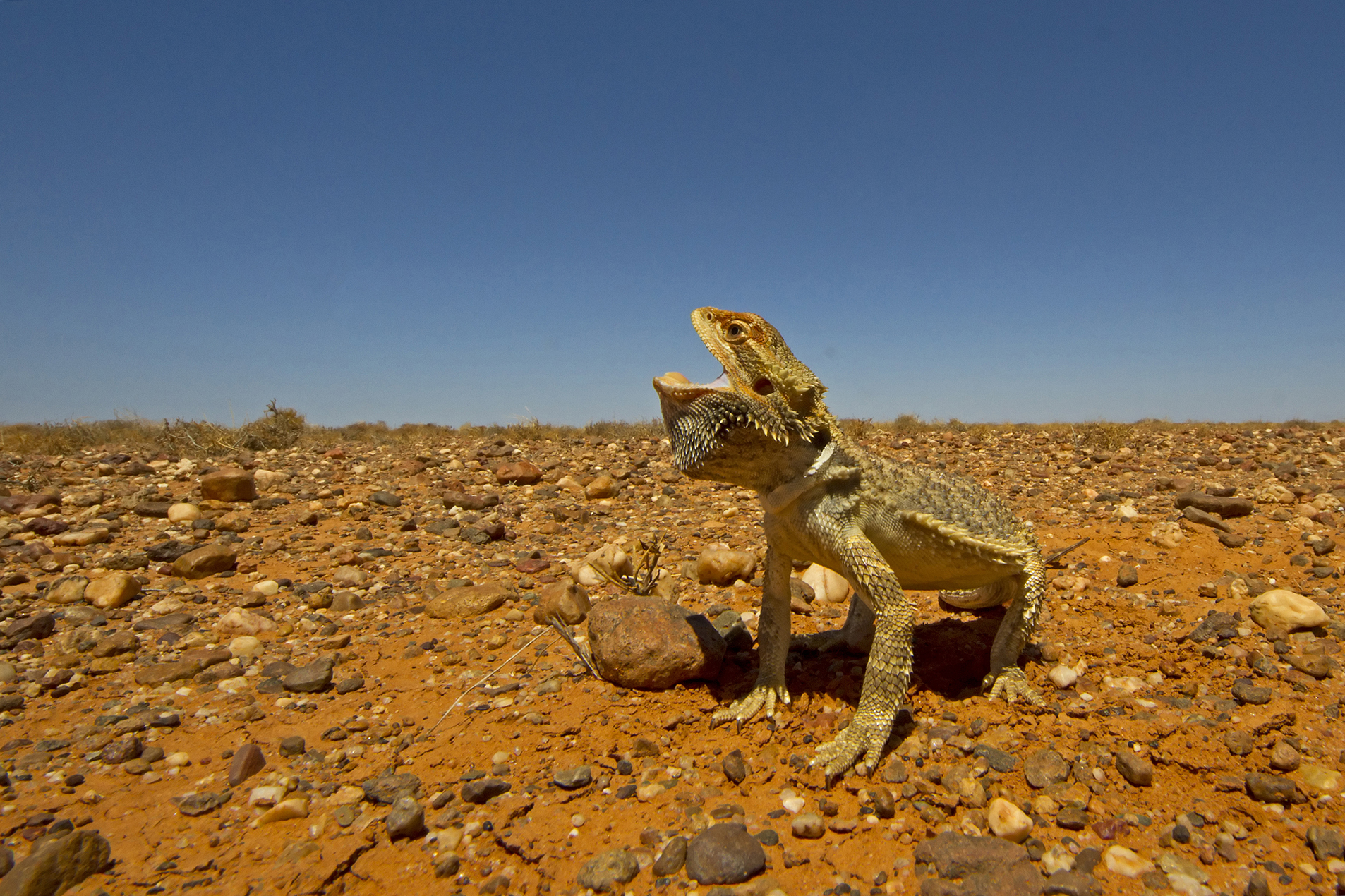

Bearded Dragon in its natural habitat, Outback Desert, Australia - Anonymous (Nactus Award).
-


Stone Desert Bahariya Black 11 lb – 5 kg
-

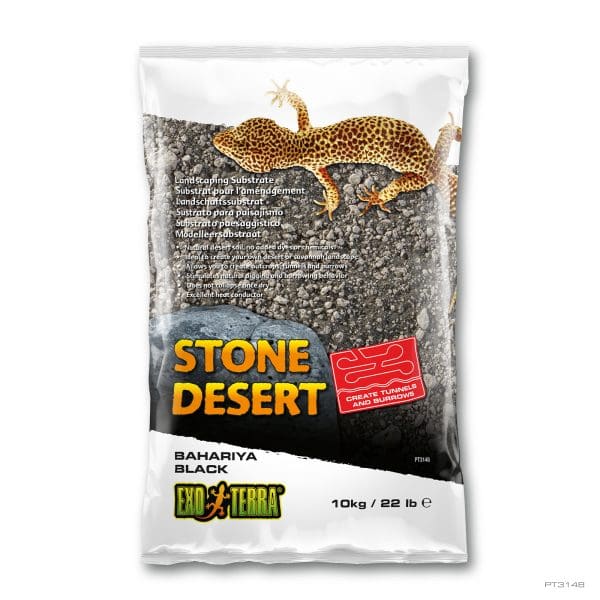
Stone Desert Bahariya Black 22 lb – 10 kg
-

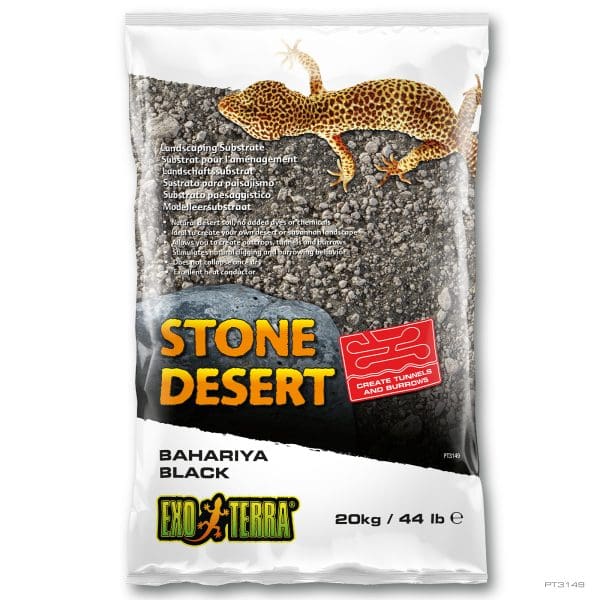
Stone Desert Bahariya Black 44 lb – 20 kg
-

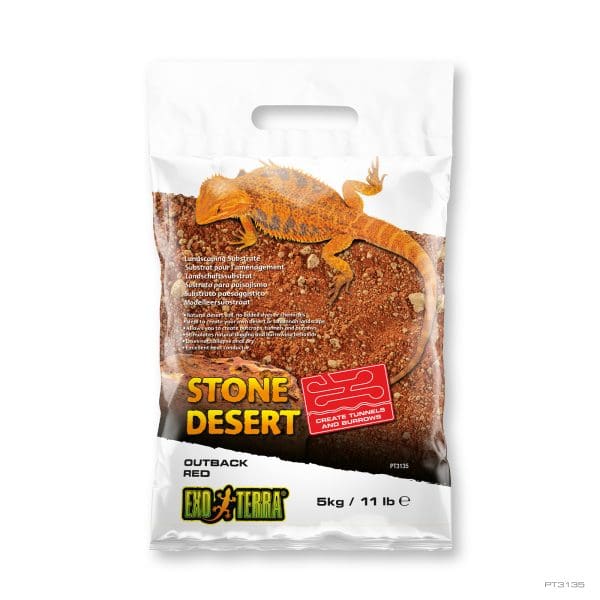
Stone Desert Outback Red 11 lb – 5 kg
-

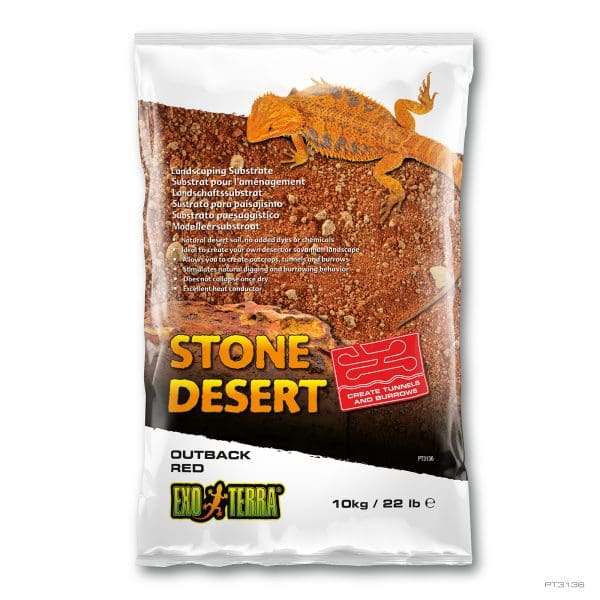
Stone Desert Outback Red 22 lb – 10 kg
-

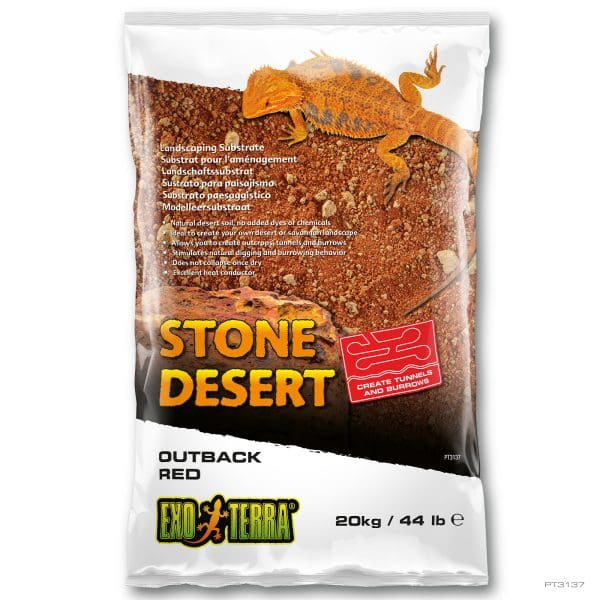
Stone Desert Outback Red 44 lb – 20 kg
-

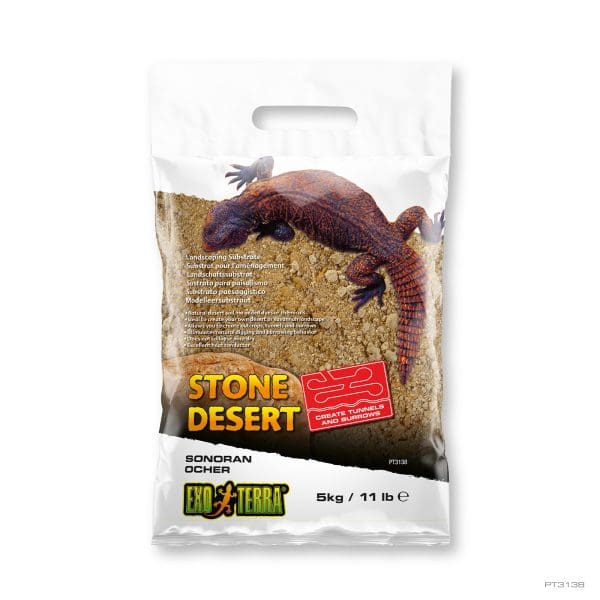
Stone Desert Sonoran Ocher 11 lb – 5 kg
-

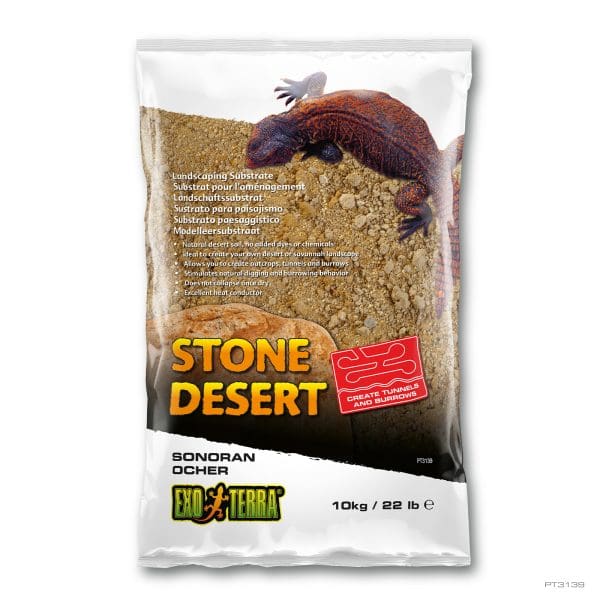
Stone Desert Sonoran Ocher 22 lb – 10 kg
-

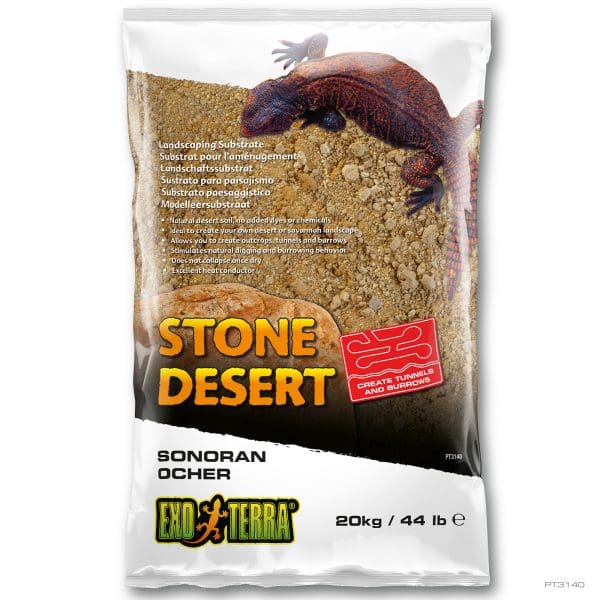
Stone Desert Sonoran Ocher 44 lb – 20 kg
Substrates Topics
Impaction, a secondary condition
Gastrointestinal impaction in reptiles and amphibians is considered a secondary condition: it typically arises as a consequence of other underlying issues or conditions. The primary causes that lead to gastrointestinal impaction are usually related to the animal's environment (for example temperature and humidity), diet, or overall health.
Subterranean Sanctuaries
Fossils trace the origins of these subterranean dwellings back to the age of dinosaurs, with creatures carving out their own spaces some 260 million years ago. This ancient practice of burrowing has been a survival strategy adopted by numerous species throughout the millennia.
Why choose a natural substrate?
A natural substrate can harbor beneficial microorganisms that contribute to the breakdown of organic matter, recycling nutrients, and supporting a healthy ecosystem. These microorganisms create a balanced environment that mimics natural ecosystems. In a natural substrate, nitrifying bacteria can convert ammonia (produced from animal waste) into less harmful substances like nitrate. This helps maintain a healthier environment by reducing harmful ammonia levels. Some substrates can act as pH buffers, helping to maintain a stable and suitable pH level for the terrarium's inhabitants. As a consequence, natural substrates are an essential component of any bioactive terrarium.
Stay up on all things exo terra.
"*" indicates required fields

